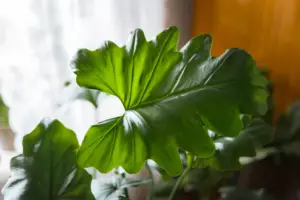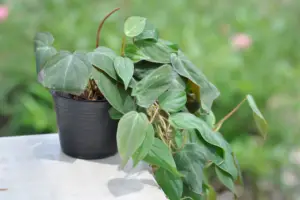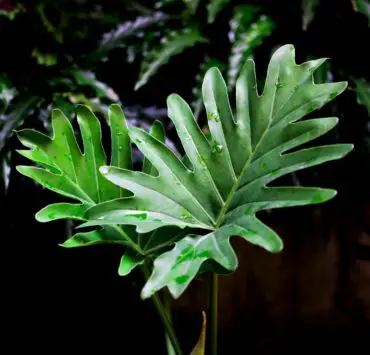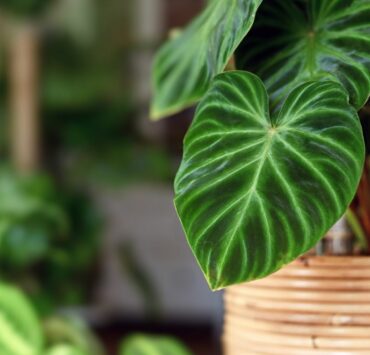Light Requirements
Philodendron Xanadu prefers bright, indirect light but can also tolerate low light conditions. It is essential to avoid direct sunlight, as it can burn the leaves. If your plant is not receiving enough light, it may become leggy and lose its bushy appearance. If this happens, move it to a brighter location.
Watering
Philodendron Xanadu prefers moist soil but is susceptible to root rot if overwatered. Water the plant thoroughly and wait until the top inch of soil is dry before watering again. It is essential to ensure that the soil has proper drainage, as stagnant water can also lead to root rot. To avoid waterlogging, it is a good idea to use a well-draining potting mix.
Humidity and Temperature
Philodendron Xanadu prefers moderate to high humidity levels and can benefit from occasional misting. This plant also prefers warm temperatures between 65-85°F (18-29°C). It is essential to avoid sudden temperature changes and drafts, as they can stress the plant and cause leaf drop.
Fertilization
Philodendron Xanadu is a light feeder and does not require frequent fertilization. Fertilize the plant every two to three months during the growing season with a balanced, water-soluble fertilizer. Avoid over-fertilization, as it can cause the leaves to turn yellow and fall off.
Pruning
Philodendron Xanadu is a fast-growing plant and can benefit from occasional pruning to maintain its shape and size. Prune the plant in the spring or summer to remove any dead or damaged leaves and to promote new growth. If the plant becomes too large, you can also divide it and repot it into smaller containers.
Propagation
Philodendron Xanadu can be easily propagated through division. To propagate the plant, remove it from its pot and gently separate the roots into two or three sections. Repot each section into a separate container with fresh soil, and water it thoroughly. Keep the new plants in a warm, humid location and avoid direct sunlight until they are established.
Philodendron Xanadu is an easy-to-care-for plant that can add a touch of tropical flair to any space. With proper care, this plant can thrive and grow into a beautiful and lush specimen. Remember to provide it with bright, indirect light, moist soil with proper drainage, moderate to high humidity levels, and occasional fertilization and pruning. With these simple tips, you can enjoy the beauty of Philodendron Xanadu for years to come.
- Does Philodendron Xanadu like full sun? No, Philodendron Xanadu prefers bright, indirect light but can also tolerate low light conditions. Direct sunlight can burn the leaves.
- How do you care for a Philodendron Xanadu? To care for a Philodendron Xanadu, provide it with bright, indirect light, moist soil with proper drainage, moderate to high humidity levels, occasional fertilization and pruning. Avoid direct sunlight and overwatering.
- Can Xanadu grow in low light? Yes, Philodendron Xanadu can tolerate low light conditions, but it prefers bright, indirect light.
- How much sun does a Philodendron Xanadu need? Philodendron Xanadu prefers bright, indirect light but can also tolerate low light conditions. Direct sunlight can burn the leaves.
- How often should I water my Xanadu? Water your Philodendron Xanadu thoroughly and wait until the top inch of soil is dry before watering again. It is essential to avoid overwatering, as it can lead to root rot.
- What are the common problems with Philodendron Xanadu? Common problems with Philodendron Xanadu include root rot from overwatering, yellowing or browning leaves from underwatering or over-fertilization, and pests such as spider mites and mealybugs.
- Can you grow Xanadu in pots? Yes, Philodendron Xanadu can be grown in pots. It is important to use a well-draining potting mix to avoid waterlogging.
- Why are Xanadu leaves turning yellow? Xanadu leaves can turn yellow due to underwatering, overwatering, over-fertilization, or nutrient deficiencies.
- How big does Philodendron Xanadu get? Philodendron Xanadu can grow up to 3-4 feet tall and wide, but it can be maintained at a smaller size through pruning.








